Published 7 May 2017 ● Last Updated on 30 September 2020
In case you are wondering where I am coming from…I am that “just married” girl who had a crazy awesome wedding recently. Like everyone else out there, I have so many wonderful memories of the D’ day to cherish and a few glitches here & there. The post-bridezilla phase has arrived & the ever critical M.B.A. grad in me urged for a retrospective analysis of the whole event. So here we go..
The Stats:
Indian weddings use up a lot more resources than required. A lavish wedding generates tons of waste, and creates landfills. According to survey figures given by Chennai-based wedding planners, around 12,000 couples tie the knot on an auspicious day in India. Roughly summing up to 10 million a year. Imagine how much waste that would generate!!
Verdict: Supply options for an eco-bride are quite limited and may require some extra planning. However it’s an opportunity to put your creative hat on & jump into DIY projects!!
The Idea:
My first thought on socially responsible & eco-friendly wedding was seeded in one of the “sustainable management” lectures. Indian weddings use up a lot more resources than required and here was my chance to make an impact.
After discussing with my family, we decided to have an elegant day-wedding instead of a traditional one held during the night. Trousseau wise, we all went for traditional silks. Mom opened up her weathered jewellery box to take out vintage necklaces, ear rings and bangles and I didn’t have to spend a fortune on new ones in the process. (Saved me a hole in the pocket… phew!!)
We approached a beach side resort for the venue, and they happily decorated it with potted flower plants from their garden. Per our requirements, decorations were kept strictly to fabrics and flowers only. There was minimal usage of electricity and air conditioning, thanks to the sea breeze. Ceramic plates, steel cutlery & glasses ensured zero plastic waste. Sourcing for the banquet was made solely from local farms. And yes! The return gifts were hand loom sarees/dhotis from the weaver’s co-operatives.
So there I was, amidst the laughter and blessings of my dear ones, having my dream wedding with a hint of green to it.
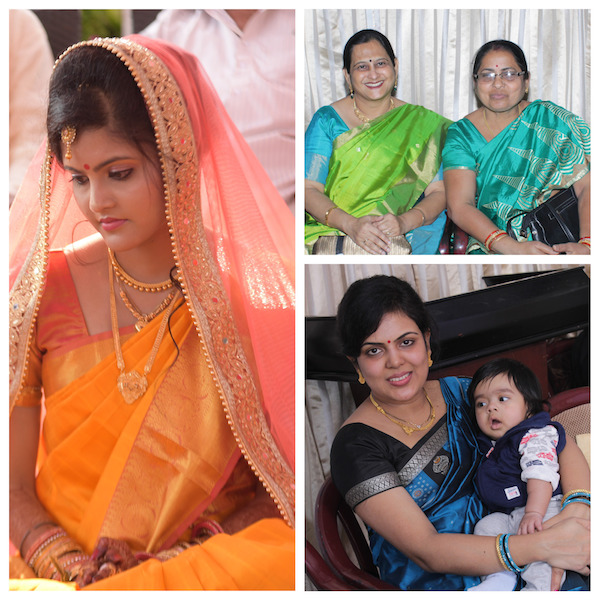
So which areas need one’s attention?!
Though going green can prove to be quite a challenge, some of my friends also tried to keep their weddings eco- friendly in certain aspects. Be it decorations, trousseau or other accessories, these small ideas can make a difference to the environment and society. Here are 6 handy tips that I would like to share with you!
1) The Invitations:
Go easy on the invite inserts: Nowadays, invitation cards that resemble coffee table books are in trend. With unnecessary inserts, plastic items, cardboard casings, these will end up using more dustbin space anyway. So why not go for a simple and elegantly designed card that conveys the message & goes easy on the environment?
Recycled and seeded paper: Keep an eye out for stationers who offer recycled paper products and vegetable-based inks, like The Windmill Paper Boutique (they even source printing from windmill-powered printers!). Some paper products are even plantable—yes, plantable!
Paper from companies like Botantical Paper Works are embedded with seeds. These contain tiny flower or herb seeds that sprout when buried in the earth. Designed in a variety of colors, sizes, fonts and styles, paper can’t really get more planet-friendly than this. Guests can plant them in their backyards and the paper turns into flowers, plants or herbs instead of ending up in a landfill. Among other alternatives, you can go for cotton-based cards from Crane & Co. or bamboo-based ones by Smock.


2) The Venue:
The venue plays a big part in setting the atmosphere for your wedding and selecting the right venue is perhaps the most important decision for you. While choosing a venue, please keep these points in mind:
Opt for a natural, open-air venue: It could be a garden, lush green lawn or even a beach, so you can have an abundance of natural light. This saves loads of electricity used for décor and lighting. Also makes your photographer happy as the snaps come out really well in daylight!! A garden wedding, for example, minimizes your need for decorations and the fee will be put to good use in some other area.
Even so, outdoor weddings are totally weather dependent. And having a semi-indoor/canopy wedding venue with a lot of natural lighting is a great option to avoid risk.
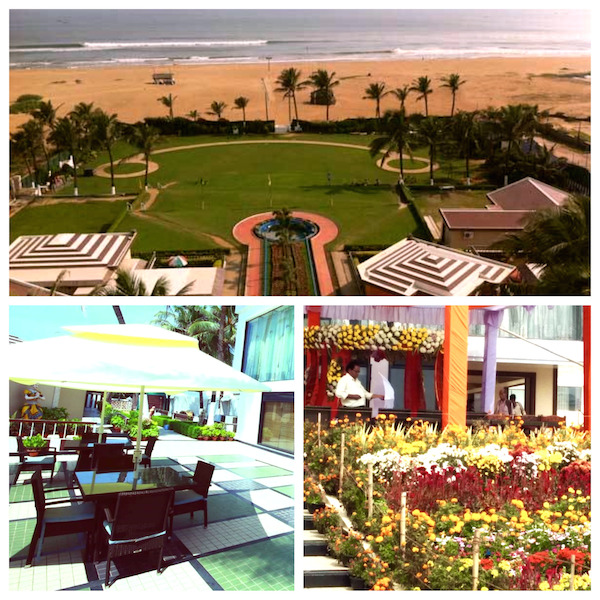
Have your wedding festivities during the day: A day wedding might not count as traditional for many cultures, yet it’s the most sensible and economic of all. Think about it! – no need of any artificial lighting, elegant décor options that will stand out in bright light, and even the simplest of wedding attires will look gorgeous during the day as opposed to a night wedding. Also photographs taken under natural lighting look even better!
Yet, if you want an evening reception, ask the venue manager for energy saving light bulbs or any other eco-friendly options they have in place. Have paper lanterns that dispense brighter light at lower electricity consumption as compared to the popular fairy light strings. Design the theme to create lighting areas using diya/candles etc. This will add grandeur to the décor and solve lighting issues as well.
P.S. Be prepared for some incredulous looks & awkward answers from the venue manager though!

3) Decorations:
Create a zero plastic décor: Usually plastic shiny objects, paper flowers and thermocol and styrofoam name boards form a part of the usual decorations. Even the flowers that are used often are intertwined with glittery plastics and pins to attach them onto a styrofoam base, garlands also contain some plastic decorations. Instead, switch over to using only flower and leaves for all your decorations.
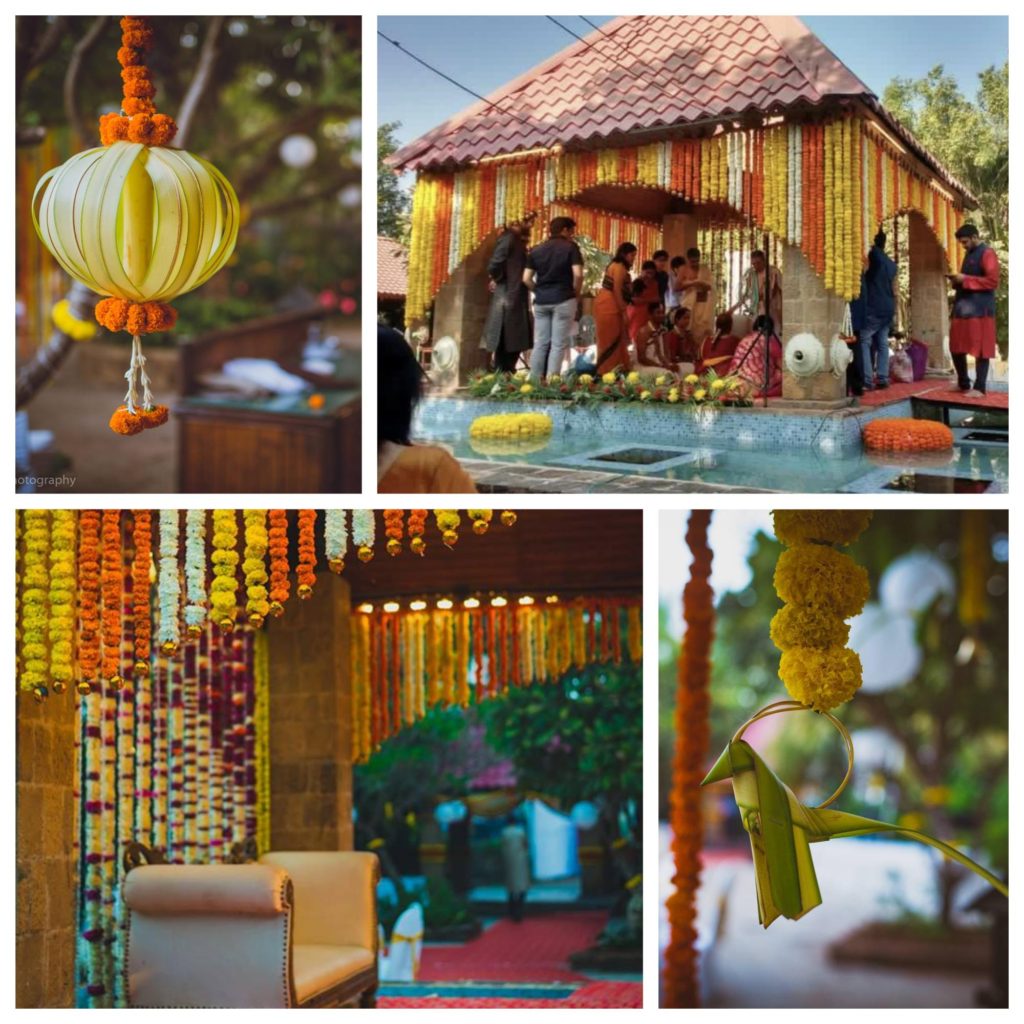
Organic flower suppliers: Make sure that you use only local flowers such as jasmine, marigold, roses etc as opposed to exotic flowers such as orchids, which involve a lot of transportation and sourcing costs. Opt for local flower farms that use organic fertilizers. Ask your florist for minimal usage of plastic in the flower décor.
DIY, DIY, DIY: I know this can be a bit hectic, but if you could create a masterpiece with your childhood bicycle, or a book shelf or mirror frame to adorn your wedding venue, it definitely gives an edge to personalizing the whole thing. You can get creative and use woven mats or printed cloth for making the backdrop; they look trendy and don’t produce any garbage.
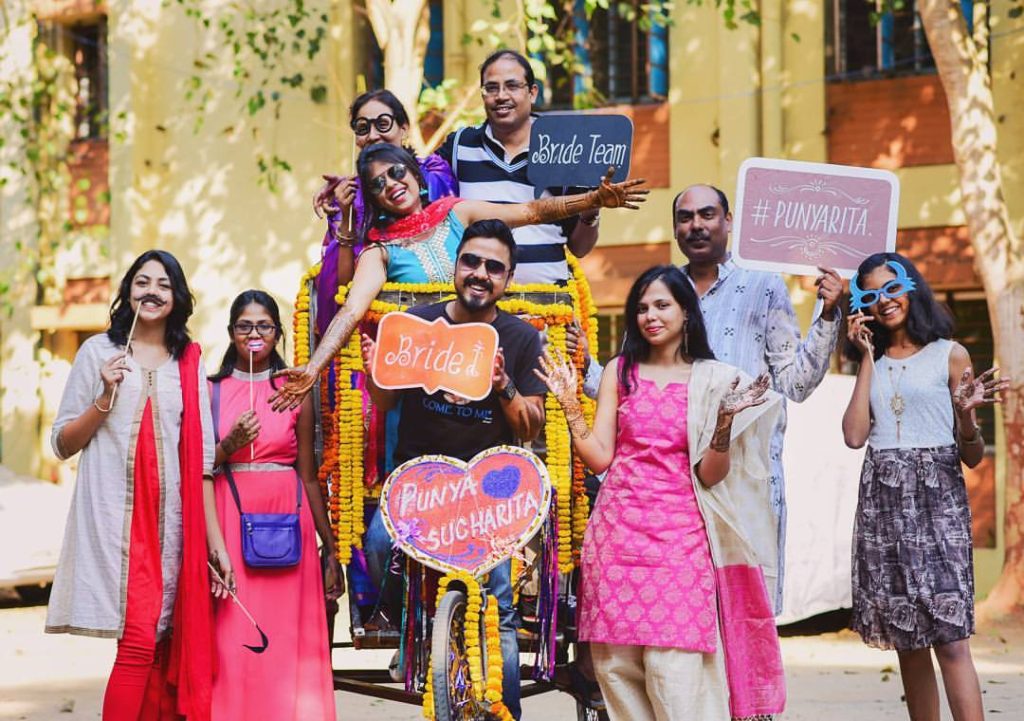
4) The Trousseau:
Now, don’t we all have a mental image of how we want to look on the wedding day! The couture, jewelry, accessories, hair style, make up, everything has to be perfect. So we all turn towards what’s in trend and what looks gorgeous, perhaps without giving a second thought to whether it’s ecofriendly, ethically produced and suitable for using in future occasions.
Go for organic fabrics: An eco-friendly outfit is a more sustainable option to a mass-produced conventional outfit. Consider choosing an outfit that is created from natural dyes and fibers such as chemical-free silks, traditionally hand loomed sarees, organic cotton dhotis etc from government/ co-operative shops that ensures fair work conditions for the craftsmen and weavers.
Buy from fair-labor manufacturers: Lately, there has been a revival of traditional Indian weaves in bridal fashion as eminent designers such as Anita Dongre, Ritu Kumar, Sabyasachi and Manish Malhotra are including them in their latest wedding collections. Apart from this, there are brands such as Saree Udyogs, aritsan co-operatives Anavila, Gaurang, Ekaya Banaras etc. which produce bridal wear that is made from organic material, traditionally made in India and sustainable.

Drape 9 yards of memory: This might be a tricky decision as every bride wants to look special in her wedding dress. Yet, a vintage saree or lehenga passed down from your mom’s wedding trousseau can work wonders. You can alter and make changes to the embellishments as per your taste, but the essence remains same.
Vintage jewelry: Remodeling and reusing existing vintage jewelry can give you a regal look. Chokers, beaded chains, bridal brooch, kundan rings etc. never go out fashion. So instead of spending a fortune in a new set of bridal jewelry, you can always turn to your mom or granny’s good old ‘gehna box’.
While buying new jewelry though, you can browse through green bridal collections that use sustainable diamonds, fair-labor gemstones and recycled gold.
Reuse the wedding attire: While choosing your wedding ensemble, keep in mind that this investment should not be made for one day only. Rather spend the money in buying something that you can wear in several occasions in the future. For example, re-use the dupatta for your reception lehenga. Though you might have to make a lot of color co-ordinations, the end result is totally worth it.
You can refurbish your lehenga to create an elegant anarkali out of it. Use the dupatta to add zing to your otherwise simple salwar suits. Mix & match the colorful bangles, the latkans & wedding shoes to give you a hip look in any ethnic occasions you attend.
5) The Wedding Banquet:
Cutlery: Although food is typically served on the traditional plantain leaf or ceramic plates at the wedding banquet, accompaniments see a lot of disposables being used. Styrofoam soup cups, plastic spoons, plastic or paper cups for sweets, chaat, and drinks, bottled water and tissues are some common examples of disposables that are used.
All utensils used in the dining hall should be eco-friendly and reusable – glasses, cups, spoons, plates, coffee /juice/water tumblers and hand wash bowls should be made of steel or ceramic, and of course food to be served on banana Leaves or reusable plastic/melamine plates.
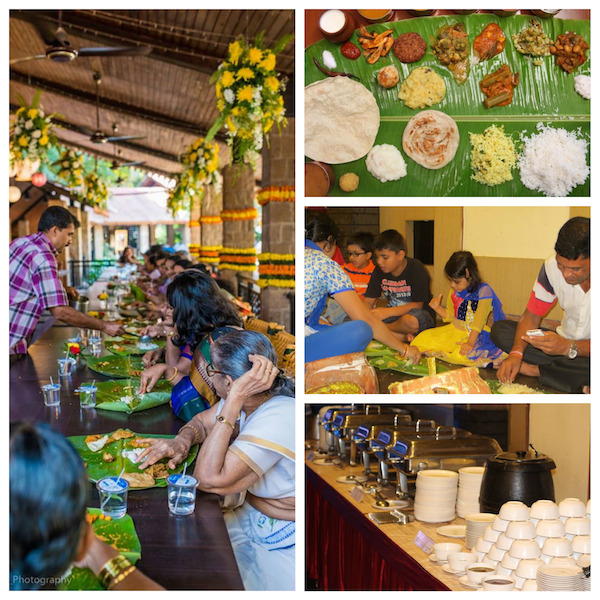
Water bottles: Usually disposable paper or plastic glasses are pre-filled and kept and bottled water is given to each person at the table. At the end, apart from wasted money on water bottles, huge quantities of plastic bottles are generated. Thousands of paper/plastic cups are also generated, paper cups cannot be recycled and plastic cups have very low recycling value even if kept aside.
Instead, provide mineral water from reusable 20 litre cans, hygienically served in clean steel jugs and poured into steel tumblers. Keep water dispensers with reusable glasses around the hall for people to use.
At the end there are no wasted disposables, and is very cost effective.
Leftover food: While placing order to the caterer, go through the RSVP list and make a safe guess on the amount of food to be prepared for the day. Keep a charity organization on standby so that the extra food can be distributed to the needy and not end up getting wasted.
6) Return Gifts:
Return gifts are the norm of many Indian weddings. Going beyond the usual sweets and dry fruits, you can gift the guests with herb-seed packages, saplings of plants like jackfruit and neem etc.
There are various options which guests will appreciate.
Potted Plants: Plants are great gifts that help the environment. They also look beautiful and add ambiance to any venue.
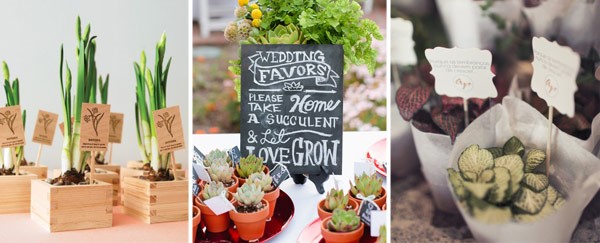
Donations: A donation to an organization of your choice on behalf of each guest is something they will appreciate. When selecting an organization, always research how much of your donation will contribute to administration and marketing costs to ensure that the most is made out of your donation.
And there you go.. Perfect recipe for your very own big, fat & green Indian wedding.
Image credits: Padmalaya Mallick, Vandana Hebbar, Sucharita Babu, Rashmi Kulkarni, AshuVini_Photography
-Padmalaya
Padmalaya Mallick is a Business Consultant at Deloitte on weekdays. She is an avid bibliophile, a rather moody writer & painter during weekends but more importantly a traveler & day-dreamer!! Her love for nature comes from her dad, who she credits with teaching her everything she knows about urban farming & recycling. Padmalaya aspires to change people’s perception that going green is drab. In fact, she wants to show the world how amazingly elegant ‘eco-friendly lifestyle’ can become.



0 Comments